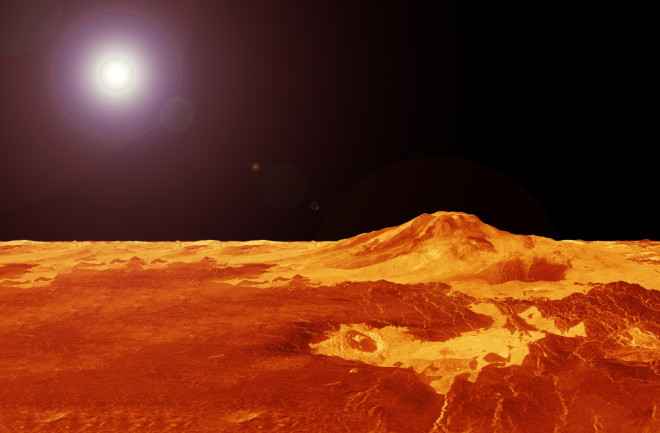Venus, our nearest planetary neighbor in the solar system, has for a long time remained shrouded in a cloud of mystery — literally. The planet is ensconced in a thick, dense carbon dioxide atmosphere that obstructs our direct view of its surface.
Recently, however, planetary scientists have made new discoveries about the geography of Venus, which suggest the planet has at least 85,000 volcanoes on its surface (and potentially even more smaller volcanoes). The research is bringing us closer to understanding the planet’s evolution and geological structure.
Read More: The Case for Life on Venus and the Privately-Funded Mission to Find It
The Magellan Orbiter
In the 1990s, NASA launched the Magellan orbiter in an attempt to image the surface of Venus. To date, the mission remains one of the most successful: Before plunging into the Venusian atmosphere, the orbiter was able to pierce the opaque cloud layer and image the surface with a synthetic aperture radar (SAR).
“The Magellan radar worked by emitting pulses of energy (in this case microwave energy) toward the surface of Venus,” says graduate student Becca Hahn, “and then received the echoes, or reflected pulses, which essentially created a radar “image” of the surface.”
Hahn is a co-author of the previously mentioned research that analyzed the Magellan orbiter’s surface data in the most detail yet. She and her colleague, Paul Bryne from Washington University, used advanced mapping software to comb through the data Magellan had collected from the surface of Venus more than 30 years ago. .
“The resolution of the Magellan synthetic aperture radar data is fairly coarse and we likely missed many smaller volcanoes that were below the limit of the resolution,” Hahn says. “Future planned missions to Venus, like NASA’s Veritas and [the European Space Agency’s] EnVision, will gather higher resolution radar imagery of the planet, so we will be able to identify smaller volcanoes.”
Mapping Venus
Planetary scientists first became aware of the extensive volcanism on Venus when the Magellan data became publicly available back in the 90s.
At the time, scientists had to outline volcano footprints by hand, an extremely tedious and time-consuming task. But the new software has given scientists a far more detailed picture of the role volcanism plays in shaping Venus’ surface.
Hahn explains that understanding the sizes, shapes and distribution of volcanoes could give clues as to what might be going on beneath the surface. For example, if researchers identified a cluster of small volcanoes but no proximal large volcano, it could indicate that the magma supply rate was fairly low and able to supply many small volcanoes — but not a single large one.
Additionally, while it’s currently understood that Venus does not have Earth-like plate tectonics, data provided by Magellan has shown tectonic structure like folds, faults, rift zones and mountains across the planet.
“There are some recent studies [conducted by Byrne] that suggest Venus could have ‘block tectonics,’ where chunks of crustal blocks have jostled around next to each other like broken chunks of pack ice,” Hahn says. “Once again, future missions will help us understand these processes better.”
Active Volcanoes on Venus
Recently, the Magellan data was also used to identify a volcano that appears to be active. By looking for changes in the landscape of areas that the orbiter passed over multiple times, researchers were able to determine that Venus is indeed likely still geologically active.
According to Hahn, it's exciting to think there may be many more active volcanoes on the surface — and that she and Byrne may have actually identified them in their recent dataset.
“I am hopeful that there are additional active volcanoes on the planet,” she says, “but as of right now, we don’t know how many more are active.” Only future research will tell.
Read More: First Evidence of a Recently Active Volcano on Mars



